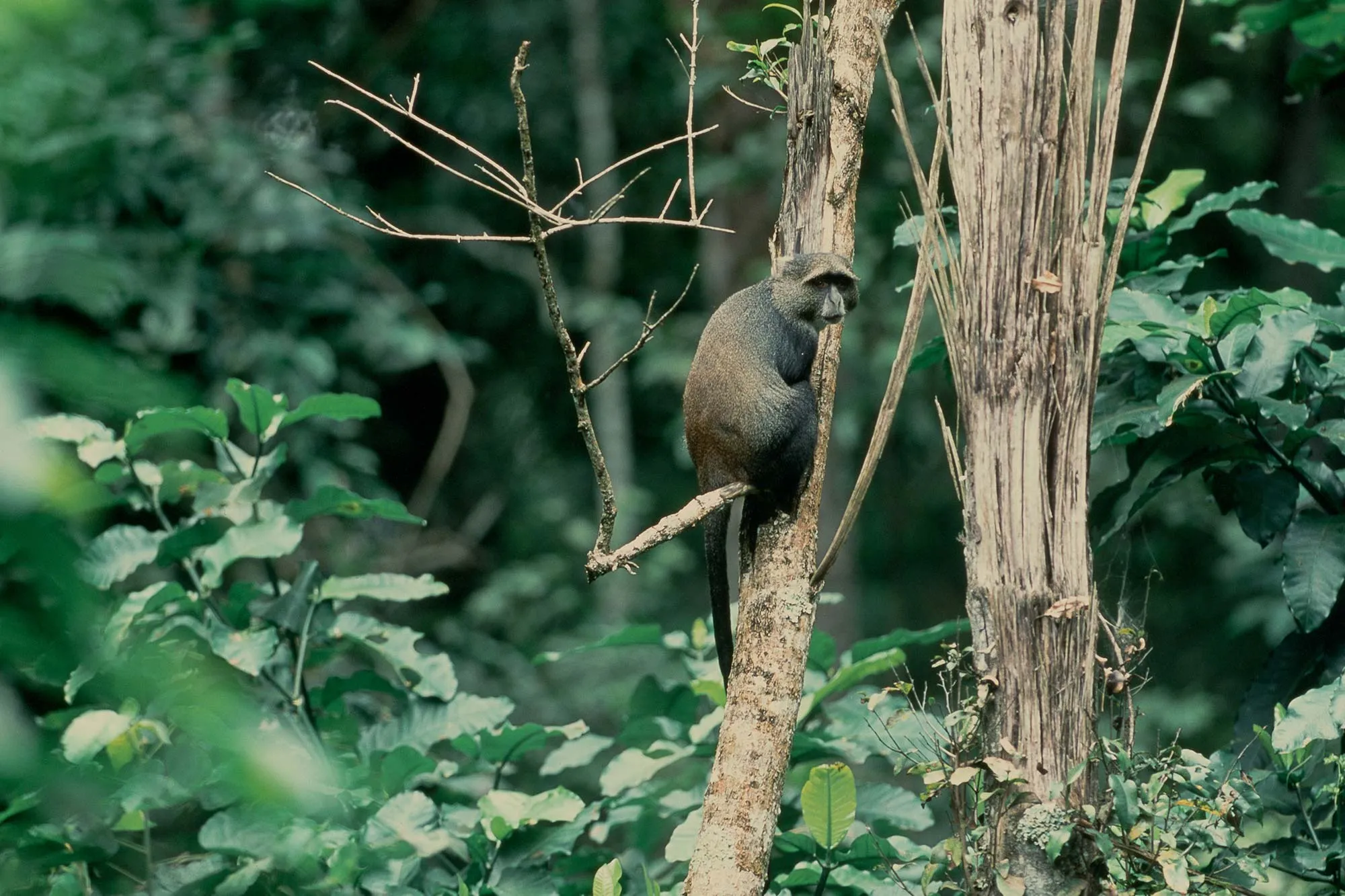The Fascinating Blue Monkeys of Uganda: A Study of Endearing Primates
The Blue Monkey (Cercopithecus mitis stuhlmanni). Nestled in the heart of Africa, Uganda’s rich biodiversity is adorned with an array of unique wildlife, among which the captivating blue monkeys hold a special place; These enchanting primates, scientifically known as (Cercopithecus mitis stuhlmanni), grace the forests of Uganda, captivating observers with their distinctive traits and behaviors.
The blue monkey, despite its name, does not actually possess blue fur. Instead, its name is derived from the bluish hue of its face and tail. These Old World monkeys are arboreal creatures, spending the majority of their lives in the forest canopy. They belong to the “Cercopithecidae” family and are found in various parts of East Africa, including Uganda’s lush forests.
Habitat and Distribution
In Uganda, blue monkeys thrive in a variety of forest habitats, from dense tropical rainforests to montane and bamboo forests. They are particularly prevalent in protected areas like Kibale National Park, Bwindi Impenetrable National Park, and the Mabira Forest Reserve.
Their adaptability to different forest types has allowed these monkeys to sustain populations despite the pressures of habitat loss and fragmentation; However, their populations, like many other species, face threats due to human encroachment and deforestation, making conservation efforts crucial for their survival.
Physical Characteristics – The Blue Monkey (Cercopithecus mitis stuhlmanni)
Blue monkeys exhibit striking physical features. They possess a coat of olive or grayish fur, with their faces and extremities displaying the distinctive bluish tinge. These monkeys have long tails, aiding their agility and balance while navigating the treetops. Adult males typically weigh around 5-8 kilograms, while females are slightly smaller.
Social Structure and Behavior – The Blue Monkey (Cercopithecus mitis stuhlmanni)
These monkeys live in cohesive groups, usually consisting of several females, their offspring, and a dominant male. Group dynamics are essential for their social structure, with grooming, vocalizations, and playful interactions being key components of their daily lives.
Their diet primarily comprises fruits, leaves, insects, and sometimes small vertebrates. Blue monkeys are integral to the ecosystem as seed dispersers, playing a crucial role in the regeneration of the forest by spreading seeds across their home range.
Conservation Status and Future Challenges
The conservation status of the blue monkey is currently listed as “Least Concern” by the International Union for Conservation of Nature (IUCN). However, this classification doesn’t undermine the threats they face due to habitat degradation and human activities.
Conservation efforts in Uganda are vital to ensure the sustained existence of these enchanting primates. Initiatives involving habitat preservation, community education, and responsible tourism play pivotal roles in safeguarding their future.
The Significance of Studying Blue Monkeys
Understanding the behavior, ecology, and genetics of these monkeys contributes not only to their conservation but also to the broader field of primatology; Their close relation to humans makes them an intriguing subject for studying social behavior, communication, and even certain aspects of cognitive abilities.
Remarks – The Blue Monkey (Cercopithecus mitis stuhlmanni)
The blue monkeys of Uganda stand as a testament to the country’s rich biodiversity. Their distinct appearance and social dynamics make them an integral part of the ecosystem, and studying them offers valuable insights into primate behavior and conservation.
Preserving the forests they inhabit isn’t just about protecting a single species but about maintaining the intricate web of life that makes Uganda’s wilderness so spectacular; With concerted efforts in conservation and education, these captivating blue monkeys can continue to thrive in their natural habitat for generations to come.








